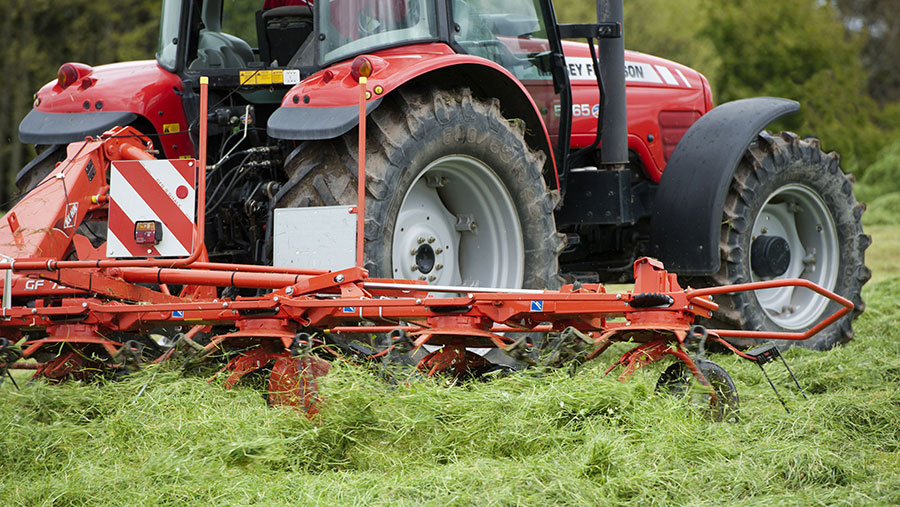Avoid nitrate deaths by testing first-cut grass
 © FLPA/Wayne Hutchinson/Shutterstock
© FLPA/Wayne Hutchinson/Shutterstock First-cut silage crops should be tested for nitrate levels to avoid poor silage.
A sudden uptake of slurry applications in silage crops could have left nitrate levels dangerously high, warn forage experts.
This will not only compromise silage quality and fermentation, but also potentially put human and animal health at risk due to the formation of nitric acid.
The warning follows an unusually hot and dry spell in April, which allowed many farms to spread high volumes of slurry on grassland in a short time. This was followed by rain, which will have encouraged a sudden uptake of nitrates and a spike in grass growth.
Dave Davies of Silage Solutions warns this has two serious implications for silage clamps:
- Fermentation problems
High nitrate levels can be problematic for fermentation because they raise the buffering capacity of the forage, and high nitrates are linked to low grass sugar. Sugar is needed for fermentation. - Potential risk to staff and stock
Nitrates act as a buffer and prevent the required drop in silage pH. Under these conditions, the nitrates in the grass can be converted to nitrogen dioxide. This gas is concerted to nitric acid when it comes into contact with water. Nitrogen dioxide is a brown gas that can persist for a day or more. Nitric acid can cause serious and permanent damage to lungs and can be fatal in humans and animals.
Testing advice
Crude protein samples over 18% and nitrates above 0.25% in the freshweight should trigger farmers to delay cutting, says Dr Davies. Nitrates between 0.15 and 0.25% could still be problematic for fermentation.
“This is not only because they raise the buffering capacity of forage, but also because high nitrate rates are biologically linked with low grass sugar – the substrate needed for fermentation.
“I’d therefore recommend using a high-strength chemical additive, proven to inhibit growth of clostridia and enterobacteria, rather than a bacterial inoculant and just hoping for a good fermentation,” he says.
Monitor nitrogen intake
Total nitrogen intake should be no higher than 150g a cow a day as a rule of thumb, advises independent nutritionist Peter Kelly.
Mr Kelly listed some key things to watch for when feeding high-nitrate silage:
- Watch for underperformance in cattle due to its effect on their ability to circulate oxygen.
- Look out for very loose dung and increasing milk urea nitrogen. High nitrate levels can upset rumen fermentation, resulting in high ammonia concentrations. This can affect milk urea nitrogen levels and compromise fertility.
- Analyse the whole ration for nitrogen before treating any forage or grain with urea.
- Be wary for potentially high levels of clostridia and enterobacteria, which will lead to a poor, butyric silage.
